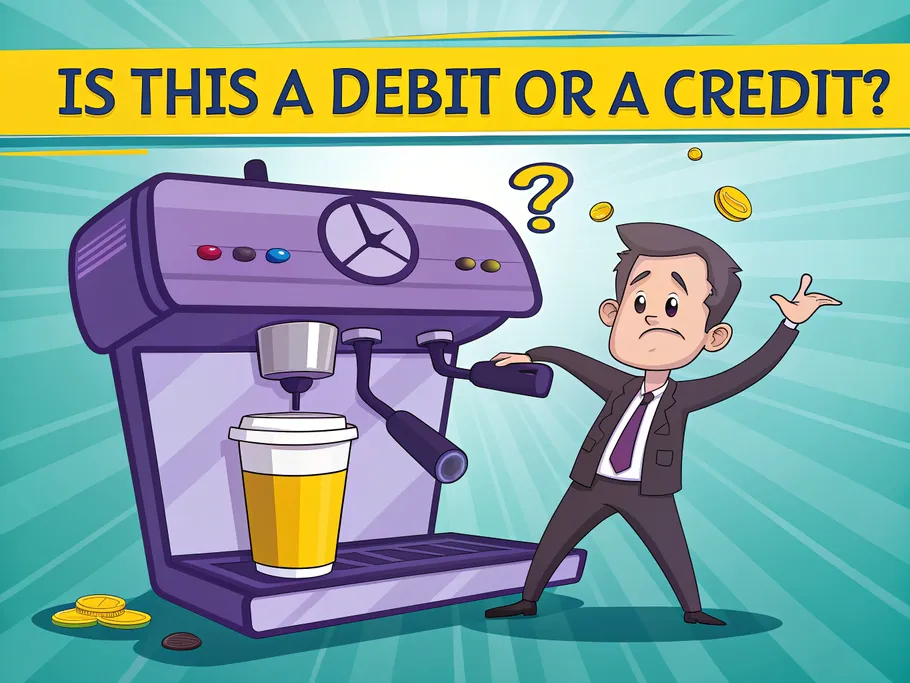So, you’ve just unboxed that shiny new espresso machine for your café or perhaps a state-of-the-art laptop for your budding startup. Congrats! 🎉 But now comes the not-so-exciting part: accounting. Specifically, you’re probably scratching your head and wondering, “Is equipment a debit or a credit?” Don’t worry; you’re not alone. This question has puzzled many a budding entrepreneur and seasoned business owner alike.
Let’s dive into this conundrum together. Grab your favorite beverage (coffee from that new machine, perhaps?), and let’s make sense of this accounting riddle. Spoiler alert: equipment is a debit. But before you click away, stick around. We’ll explain why, and we promise to keep the jargon to a minimum—no snooze-fest here!
What Is Equipment, Anyway?
First things first, let’s define what we mean by “equipment.” In the simplest terms, equipment is any tool or asset that helps you run your business. Think of it as your trusty sidekick in your entrepreneurial journey.
Equipment can vary wildly depending on your industry:
- If you’re running a tech startup, it’s your computers, servers, and perhaps that fancy VR headset.
- For a construction company, it’s your excavators, drills, and those hard hats that make you look cool onsite.
- Own a boutique bakery? Your ovens, mixers, and, of course, that top-secret recipe book.
In accounting terms, equipment falls under the category of fixed assets on your balance sheet. These are long-term, tangible assets that you don’t plan on converting to cash anytime soon because, let’s face it, selling your only oven might hurt your cupcake production line.
Debit and Credit: The Dynamic Duo
Alright, brace yourself—we’re venturing into accounting territory. But fear not! We’re going to make this as painless as possible. Think of debits and credits as the Batman and Robin of accounting—they work together to keep your financial records balanced and Gotham safe. Okay, maybe not the Gotham part.
Here’s the lowdown:
- Debit (Dr): An entry on the left side of an account ledger. Debits increase asset or expense accounts and decrease liability or equity accounts.
- Credit (Cr): An entry on the right side. Credits increase liability or equity accounts and decrease asset or expense accounts.
The golden rule? Every debit must have an equal and opposite credit. It’s the universe’s way of keeping the accounting forces in balance. Kind of like how you can’t binge-watch Netflix all night without paying for it the next morning.
Why Is Equipment a Debit?
So, back to our main question: Why is equipment recorded as a debit? Since equipment is an asset, and debits increase asset accounts, when you purchase equipment, you debit the equipment account to show an increase. Simple, right?
Let’s break it down:
- You buy a piece of equipment (let’s say a new delivery truck) for your business.
- The equipment account (an asset) increases because you now own more equipment.
- According to our trusty accounting rules, increasing an asset means you debit that account.
Now, because every debit needs a corresponding credit, you need to credit another account. If you paid cash, you’d credit the cash account (an asset account that decreases with a credit). If you took out a loan, you’d credit notes payable (a liability account that increases with a credit).
See? It’s like a see-saw that stays perfectly balanced. Or at least it should, unless someone’s cooking the books—and we don’t recommend that.

Understanding the Debit and Credit Entries
Let’s get a bit more detailed without putting you to sleep. Promise.
When You Purchase Equipment
Picture this: You just bought a $50,000 piece of equipment for your company. Here’s how the journal entry looks:
Debit: Equipment account increases by $50,000.
Credit: Cash account decreases by $50,000.
In ledger terms:
| Date | Account | Debit | Credit |
|---|---|---|---|
| MM/DD/YYYY | Equipment | $50,000 | |
| Cash | $50,000 |
Easy peasy. You now have a new asset, and your cash has decreased accordingly.
Equipment Depreciation: The Party Pooper
Unfortunately, equipment doesn’t last forever. (If only that were true for smartphones!) Over time, your equipment loses value—a concept known as depreciation. In accounting, you need to account for this decrease in value.
Here’s how it works:
- Let’s say the equipment has a useful life of 10 years.
- You spread the cost over those 10 years, depreciating $5,000 annually ($50,000 ÷ 10 years).
- Each year, you record a debit to Depreciation Expense and a credit to Accumulated Depreciation.
Journal entry for annual depreciation:
| Date | Account | Debit | Credit |
|---|---|---|---|
| MM/DD/YYYY | Depreciation Expense | $5,000 | |
| Accumulated Depreciation | $5,000 |
Depreciation might not be the life of the party, but it’s essential for keeping your financial statements accurate. Plus, it can help reduce your taxable income. Win-win!

Selling or Disposing of Equipment
Eventually, you’ll need to part ways with your equipment. Maybe it’s outdated, or perhaps you just can’t stand that quirky noise it makes anymore. Here’s how to handle it in your books.
Fully Depreciated and Giving Away the Equipment
If the equipment is fully depreciated (it’s reached the end of its useful life), and you decide to give it away—perhaps to make room for a newer model—the accounting is straightforward.
Journal entry:
| Date | Account | Debit | Credit |
|---|---|---|---|
| MM/DD/YYYY | Accumulated Depreciation | $50,000 | |
| Equipment | $50,000 |
You remove both the equipment’s cost and its accumulated depreciation from your books. Easy, like saying goodbye to that old sweater you never wear.
Not Fully Depreciated and Giving Away the Equipment
If the equipment isn’t fully depreciated and you give it away (maybe to a charity or a really good friend), you have to account for the loss.
Let’s say the equipment has an accumulated depreciation of $40,000. You still have $10,000 of undepreciated cost.
Journal entry:
| Date | Account | Debit | Credit |
|---|---|---|---|
| MM/DD/YYYY | Loss on Equipment Disposal | $10,000 | |
| Accumulated Depreciation | $40,000 | ||
| Equipment | $50,000 |
You’re recording a loss because, well, you didn’t fully recover the equipment’s cost through depreciation before parting ways with it. It’s like giving away concert tickets you didn’t get to use—sad, but sometimes necessary.
Selling Equipment Before It’s Fully Depreciated
Maybe you decide to sell the equipment instead. If you sell it for more than its book value, you record a gain. If for less, a loss. Let’s assume you sell it for $15,000.
With an accumulated depreciation of $40,000, the book value is $10,000 ($50,000 original cost – $40,000 accumulated depreciation). Selling it for $15,000 means you have a gain of $5,000.

Journal entry:
| Date | Account | Debit | Credit |
|---|---|---|---|
| MM/DD/YYYY | Cash | $15,000 | |
| Accumulated Depreciation | $40,000 | ||
| Gain on Asset Disposal | $5,000 | ||
| Equipment | $50,000 |
You get to record a gain—hooray! It’s like finding a forgotten $20 bill in your jeans.
Key Takeaways
- Equipment is recorded as a debit because it’s an asset, and debits increase asset accounts.
- Debits and credits must always balance. For every transaction, the total debits equal the total credits.
- Depreciation accounts for the loss of value over time and impacts your income statement and balance sheet.
- Disposing of equipment involves removing the asset and its accumulated depreciation from your books. Gains or losses are recorded depending on the sale price versus book value.
- Always keep accurate records. It keeps your financial statements reliable and prevents any nasty surprises come tax season.
Wrapping It Up
Accounting might not be as thrilling as landing a new client or launching a product, but it’s the backbone of your business. Understanding why equipment is a debit and how to record it properly ensures your financial statements are accurate, helping you make better business decisions. Plus, it keeps the tax folks happy, and who doesn’t want that?
So next time you splurge on that new piece of equipment, you’ll know exactly how to record it. No more guessing games or lying awake at night pondering debits and credits—leave that for more important things, like plotting your company’s world domination.
